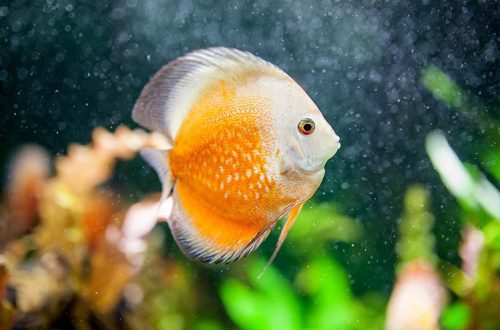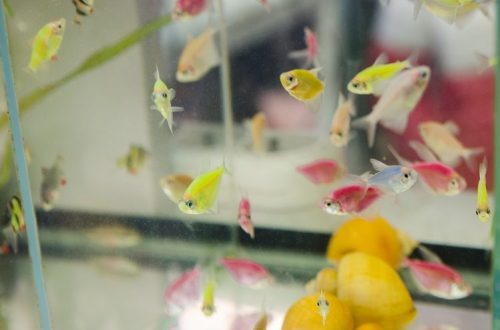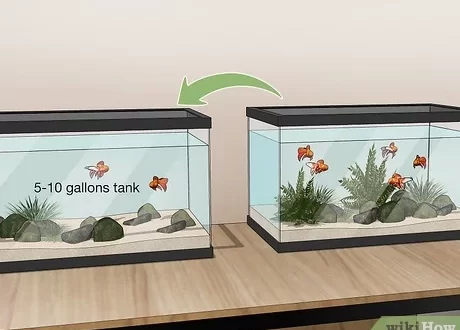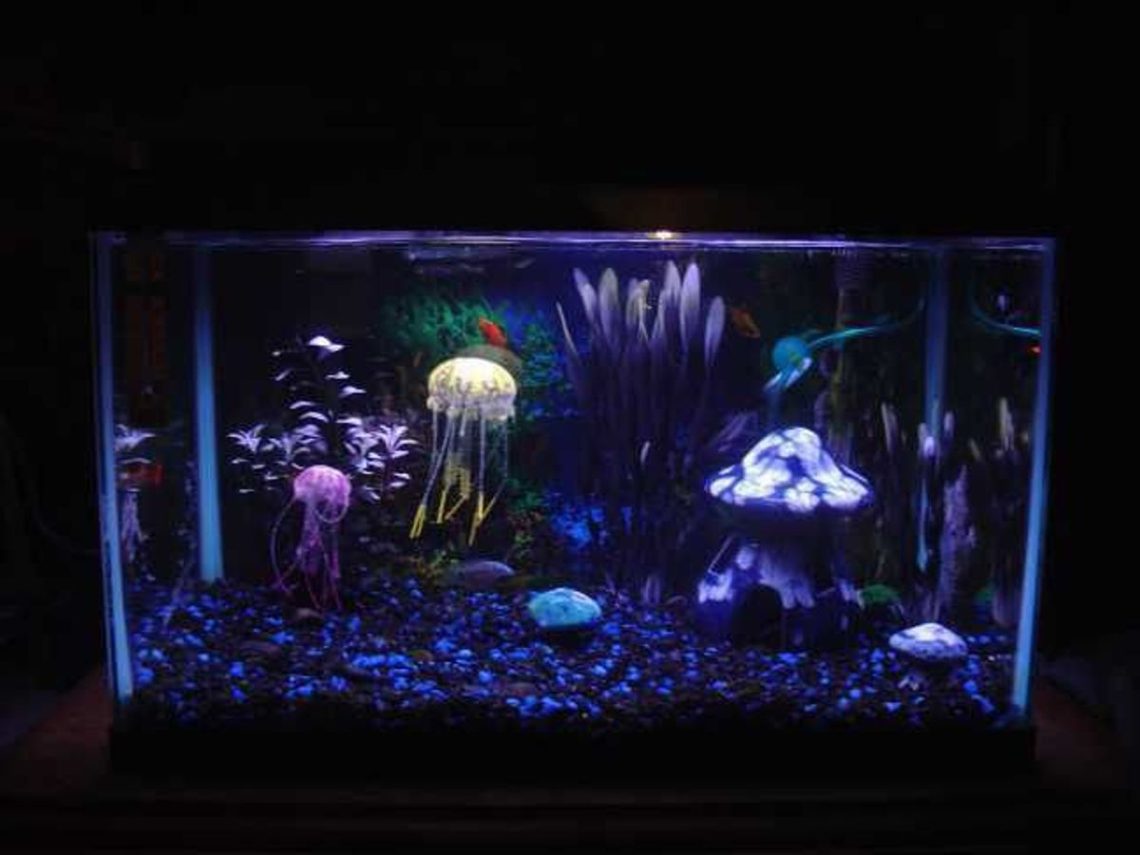
Слатководне медузе које се држе у акваријуму
The vast majority of jellyfish species live in the seas and oceans, but there is one species that has successfully adapted to fresh water – Craspedacusta sowerbyi. This species is distinguished by its small size and classic domed shape. Keeping in a home aquarium is quite possible, but requires certain conditions and the constant availability of live food.
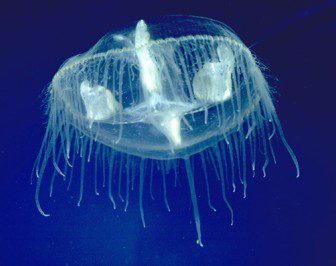
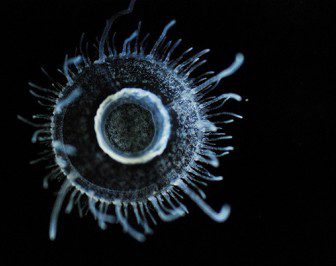
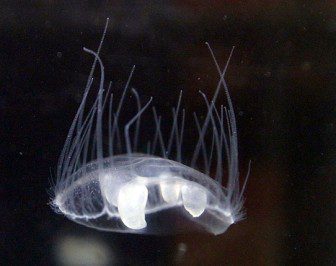
- Tank volume – from 40 liters for a pair of individuals
- Температура – 26-28°Ц
- pH value – about 7.0 (neutral)
- Тврдоћа воде – распон од меке до средње тврдоће (5-15 дХ)
- Substrate type – fine or medium gravel
- Осветљење - било које
- Кретање воде – слаба или мирна вода
- The size of an adult is about 20 mm in diameter.
- The size of the colony of polyps is about 8 mm
- Nutrition – live food (brine shrimp, daphnia, copepods)
Садржај
Станиште
Freshwater jellyfish Craspedacusta sowerbyi is widespread on almost all continents except Antarctica, lives in stagnant reservoirs and slow-flowing river backwaters, as well as artificial ponds and reservoirs.
Purchase, where to buy?
The main difficulty lies in the acquisition and transportation of an adult jellyfish. When querying in a search engine (no matter Yandex or Google), several specialized forums are quickly found where experienced aquarists share their success stories in breeding and keeping jellyfish, and they can tell you where to buy it. It should be noted that in large metropolitan areas and cities like Moscow and St. Petersburg, it is much easier to find a freshwater jellyfish, unlike the regions.
Keeping in an aquarium (general recommendations)
Successful maintenance is possible when recreating habitat conditions similar to the natural environment. You will need a small tank with a volume of about 40 liters for a pair of jellyfish. Water preferably medium hard or soft, pH neutral. Read more about pH and dH parameters and ways to change them in the Hydrochemical composition of water section. The filtration system is key, it must combine high performance and at the same time not create water movement – jellyfish cannot resist the flow. In addition, they may accidentally be sucked into the filter. The best results are demonstrated by the bottom filter, in which the area of the filter material is equal to the area of the soil, it ensures the correct vertical circulation of water and at the same time saturates it with oxygen.
Other important equipment consists of a heater, the lighting system is adjusted to the needs of plants (shade-loving or light-loving). An aerator is desirable, even when using a bottom filter.
In the design of a minimum of elements. Soil of small or medium pebbles with smooth edges or decorative glass beads. Plants to your taste, should be limited to one or two bushes, do not allow the aquarium to overgrow, otherwise there will be no place for jellyfish to swim.
Храна
All jellyfish, including freshwater ones, are predators. With the help of tentacles and stinging cells located on them, jellyfish hunt their prey. In this case, it is zooplankton: brine shrimp, daphnia, copepods (cyclops). They should be added daily in small quantities to the aquarium. This is a big problem for most aquarists, not everyone will be able to provide an uninterrupted supply of these crustaceans.
Репродукција
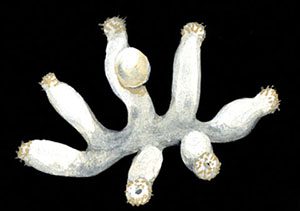 The life cycle of a jellyfish goes through several stages. Craspedacusta sowerbyi usually reproduces asexually. An adult produces a larva – planula (Planula), which in its shape and size resembles a ciliate shoe. The planula settles to the bottom and attaches itself to rocks or aquatic plants. Later, a polyp is formed from it, capable of growing into a large colony. The life stage in the form of a polyp is very hardy, it is able to adapt to a wide range of temperatures, and in adverse conditions (for example, the arrival of winter in temperate latitudes) it forms a podocyte (podocysts) – a kind of protective capsule, similar in purpose to a cyst in microorganisms.
The life cycle of a jellyfish goes through several stages. Craspedacusta sowerbyi usually reproduces asexually. An adult produces a larva – planula (Planula), which in its shape and size resembles a ciliate shoe. The planula settles to the bottom and attaches itself to rocks or aquatic plants. Later, a polyp is formed from it, capable of growing into a large colony. The life stage in the form of a polyp is very hardy, it is able to adapt to a wide range of temperatures, and in adverse conditions (for example, the arrival of winter in temperate latitudes) it forms a podocyte (podocysts) – a kind of protective capsule, similar in purpose to a cyst in microorganisms.
An adult individual appears only in environmental conditions acceptable to it and at a water temperature above 25 degrees; under other conditions, a jellyfish can spend many seasons in the form of a polyp. It is this feature that explains the unexpected surge in the number of freshwater jellyfish in any body of water, or even their appearance where jellyfish have not been seen before. Thus, during the abnormally hot summer in Russia in 2010, Craspedacusta sowerbyi were found in the Moskva River.
At home, it is quite possible to carry out the entire cycle of breeding a freshwater jellyfish from a polyp to an adult, the main difficulty in providing live food. If an adult jellyfish hunts on its own, then the polyp, remaining in one place, is limited in these possibilities, which means that the concentration of daphnia, brine shrimp, and copepods must be much larger so that it can successfully feed and grow.
- Difficulty in providing live food
- Mutual danger of jellyfish and fish



